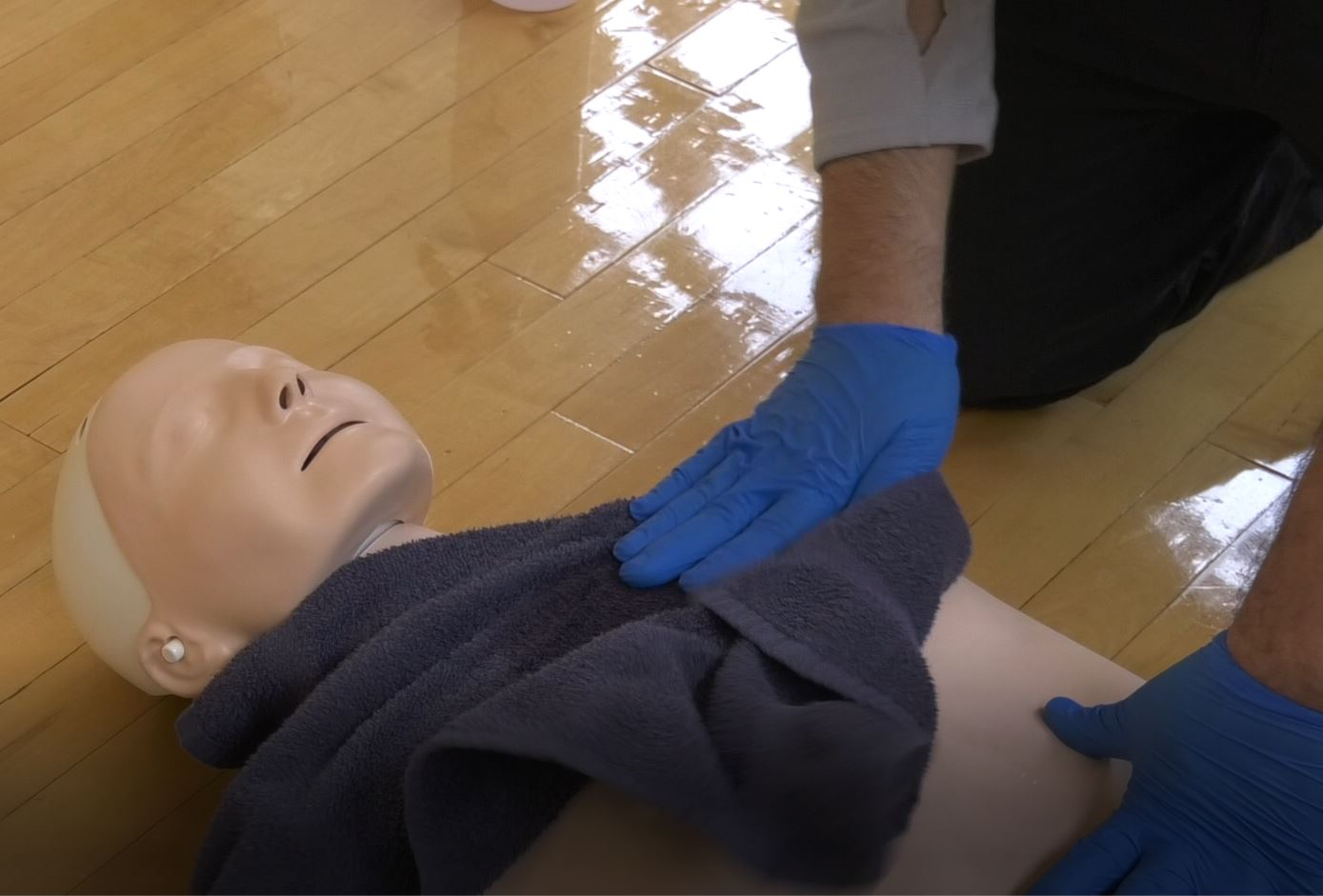By Douglas M. Campbell
Alone in the yoga room, R.J. Markowitz, a coordinator of adventure recreation at the Andrews Student Recreation and Wellness Center, carried equipment out from the storage closet and into the middle of the hall. For four years, Markowitz oversaw the yearly CPR training at Youngstown State University. The training is commissioned by the American Red Cross.
With the spread of the coronavirus increasing in the United States, the American Red Cross had to rethink the way classes were conducted. The new measures included limiting the class size to 10 people and wiping down equipment before and after each use.
“We are, as instructors, always cognizant of the fact we have a class of multiple people that are using our equipment other people use, so classes in general … we always sanitize all of the equipment,” he said.
In addition, the CPR sessions are completed prior through a blended learning style. Online sessions teach users official terms and techniques before their skills are reviewed and checked in person.
The current chest compressions to breath ratio is 30 chest compressions per two rescue breaths. Chest compressions and head-tilts were taught to students and faculty as was conducted in previous sessions.
However, rescue breaths had to be altered for CPR training.
“When we are doing rescue breaths now, the participant has to say the word ‘breath’ instead of having to breathe into the disposable lungs of the mannequin,” he said.
The American Red Cross also offers “compression-only” CPR classes that focus more on the chest compressions and completely omit rescue breaths.
Upon completion of the course, participants will be certified in adult CPR for two years.
Jesse Wright, a sophomore nursing student, went through a separate CPR and Basic Life Saving (BLS) training over the summer.
“They are putting even less emphasis on mouth-to-mouth and anything that can cause droplets to fall into the other person, they are providing face shields for you to breathe through, but there’s more emphasis on that,” Wright said.
Face shields are used in rescue breaths and prevent body fluids such as vomit and mucus from entering the mouth of the person applying CPR.
“They say that you don’t need the mouth-to-mouth to actually save someone’s life. The heartbeat is more important. The face shield just gives you an opportunity to fully complete the life-saving techniques and ensure a greater chance of survival,” Wright said.
Giovanni Bruno, a senior nursing student, also completed separate CPR and BLS trainings over the summer.
He went through the upper-division of lifesaving training called Advanced Cardiovascular Life Support (ACLS) which entails airway and cardiac management.
“What the CDC and World Health Organization are saying is COVID was transferred through droplets but now is airborne. Every time you do chest compressions particles are coming out of their airway. If they have no pulse and you need to do compressions, you have to cover their face with a paper towel, otherwise particles will expel out,” Bruno said.
He advises any student faced with a life-or-death situation to immediately call 911, check the pulse of the person who might be suffering air loss, cover their face and do compressions until help arrives.
“The problem is, you never know when you are going to use it or need it, but I feel compressions is the one thing everyone can learn how to do effectively,” he said.
